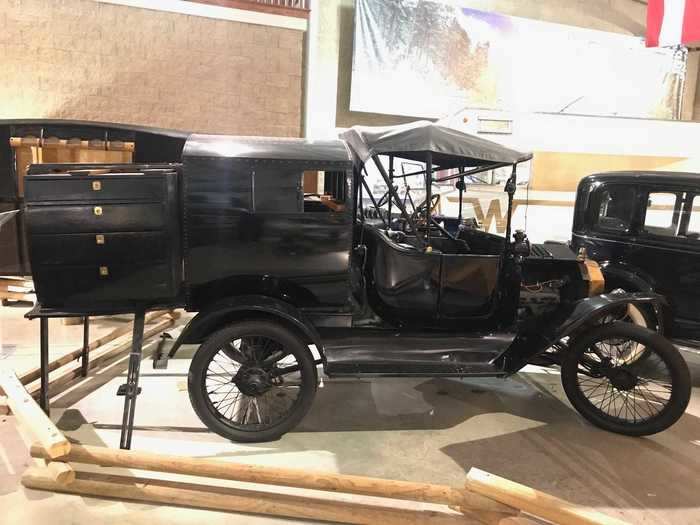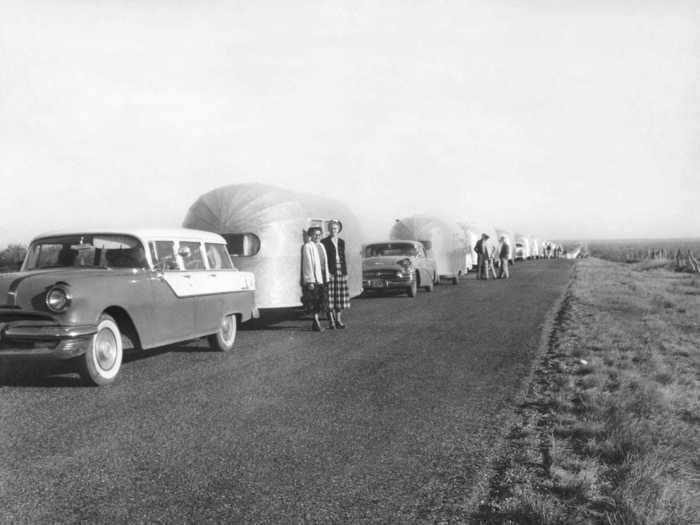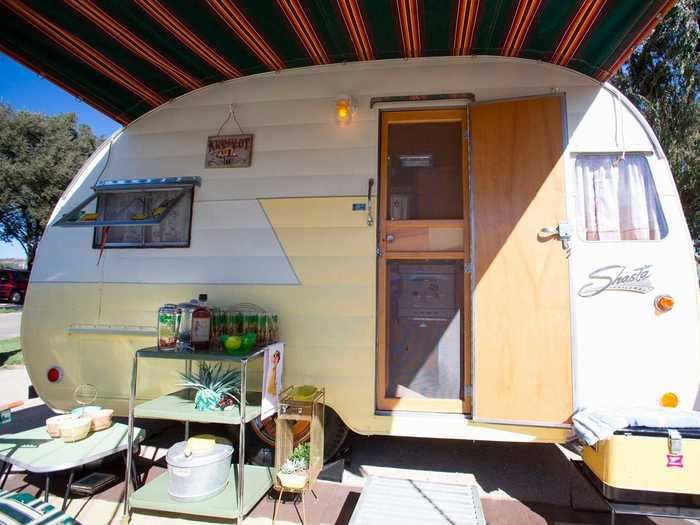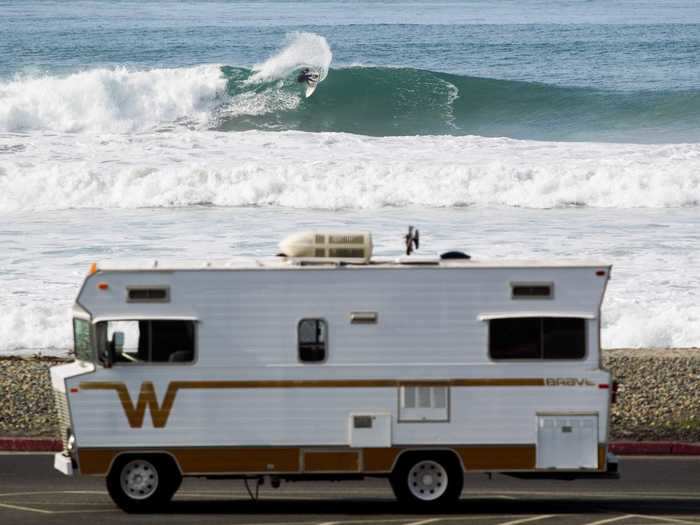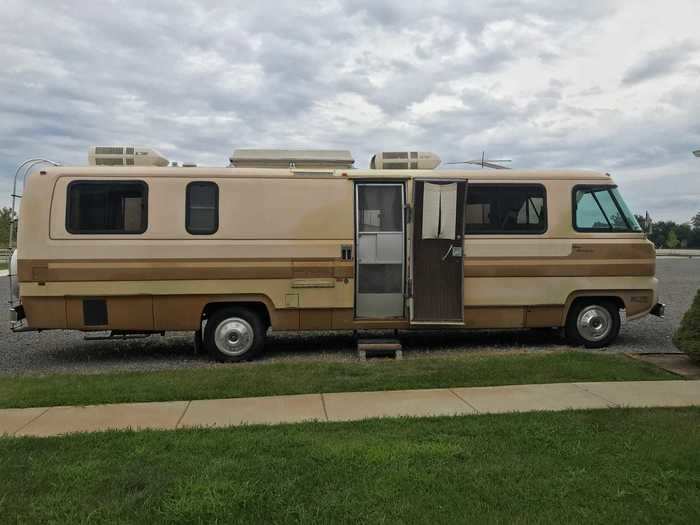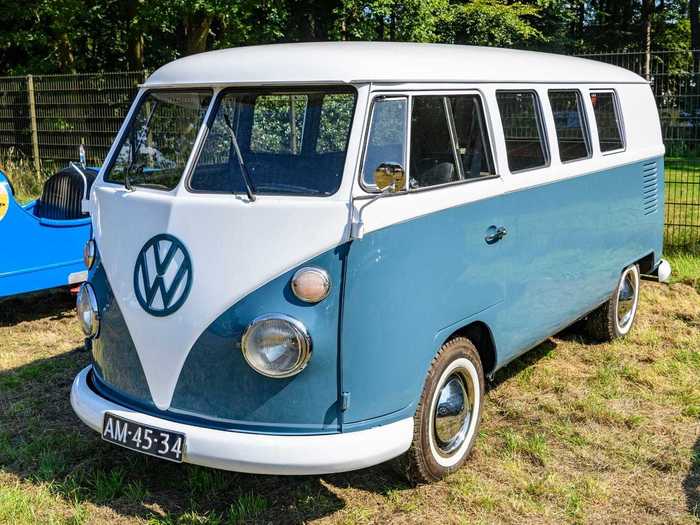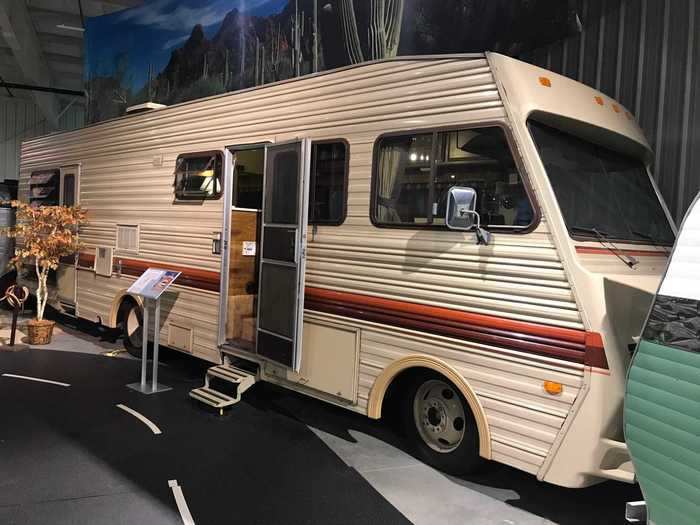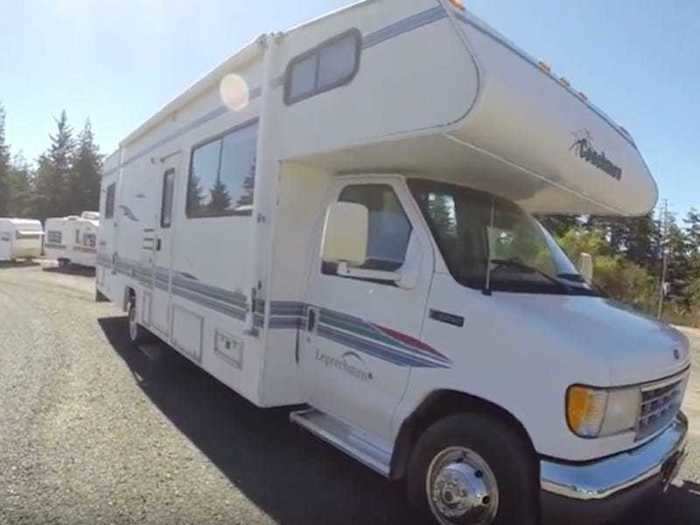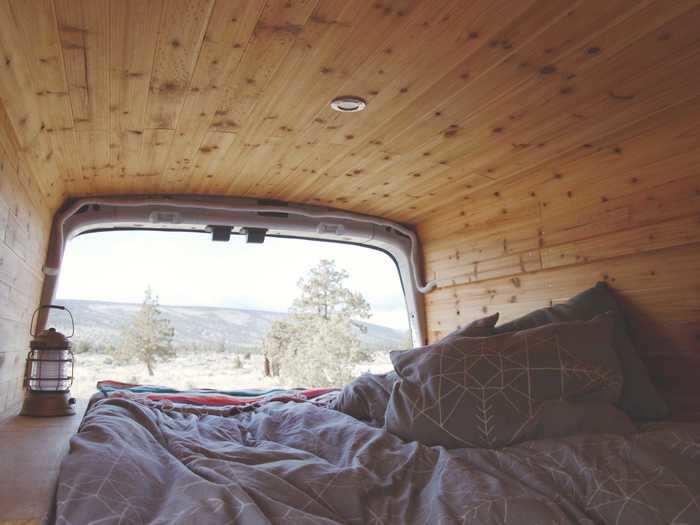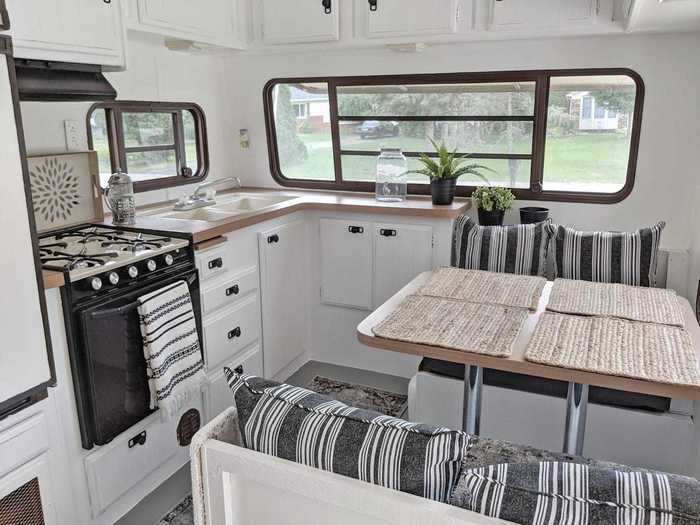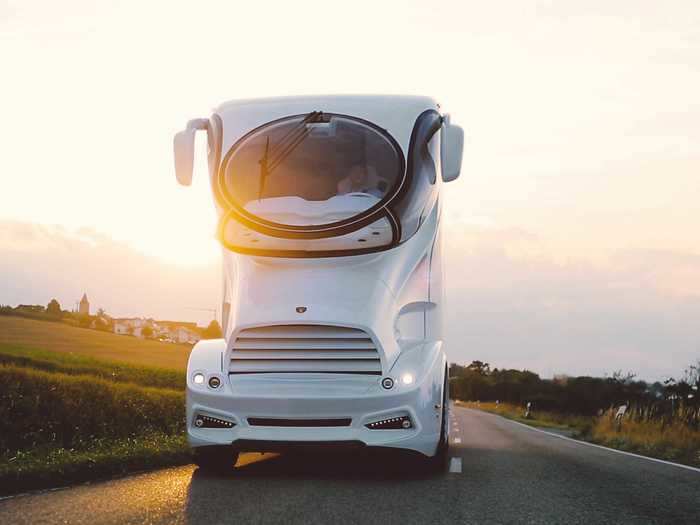VW vans epitomize wanderlust.Nick Baker / Unplash - The first RVs were invented around 1915, though they were essentially cars with a bed attached.
- The Fleetwood Bounder was popular in the 1980s, although you might also recognize it from "Breaking Bad."
- Today, RVs are focused on luxury amenities, like granite countertops and heated flooring.
Recreational vehicles, or RVs, are synonymous with road trips and summer. Whether you're taking a cross-country drive in a giant motorhome with all the amenities of a real house, or camping out in a renovated van, these vehicles epitomize freedom and travel — and they're getting more and more popular.
Beginning with the first RV-type vehicles in the 1910s, which included small cabins built onto the back of regular cars, RVs eventually evolved into homes, and even mansions, on wheels.
Keep reading for a look into how RVs have evolved over the years.
1910s: The Modified Model-T Ford Roadster is the first RV-like vehicle in history.
The Modified Model-T Ford Roadster.
Courtesy of RV/MH Hall of Fame
One of the first RVs in the US was made from a Model-T Ford Roadster in 1915. The vehicle, which is now on display at the RV and Motor Vehicle Hall of Fame in Elkhart, Indiana, consists of a "telescope apartment" with a bed built on to the back of the regular car.
While it was small, this space was perfect for drivers who were making long trips and needed a convenient place to sleep.
1930s and 1940s: The Airstream trailer laid the groundwork for future motorhomes.
A line of Airstreams.
Underwood Archives / Getty
Wally Byam built the world's first Airstream trailer in 1929. Early models of the trailer included amenities like small stoves and iceboxes and were the first self-contained trailers designed for long road trips.
In the '30s, competitive companies popped up all over the country, but Airstream always stayed on top. Byam sold the Airstreams by marketing a new way of life, one that is nomadic and always on the open road.
By the late 1940s, Byam was taking his trailers all over the world to complete road tests and improve the product. The functionality of the Airstream trailer helped usher in the RVs that became popular by the late 1950s.
Today, Airstream's signature "silver bullet" design is synonymous with road tripping with a vintage style.
1950s: The Shasta trailer was a popular way to vacation after World War II.
Shasta trailer in the 1950s style.
Education Images / Getty
1960s: Winnebago became a popular motorhome, recognized by its signature "W" on the exterior.
A Winnebago in the '60s style.
Gabe LHeureux / Getty
Winnebago has been around since 1958, but the company's popularity dramatically increased when they started mass-producing motorhomes in 1967, thus making them more affordable, according to the Smithsonian Magazine.
The home was described as "America's first family of motor homes," selling for $5,000 each.
1960s and 1970s: The Dodge Travco was popular among celebrities.
The Dodge Travco.
Courtesy of RV/MH Hall of Fame
1960s and 1970s: Volkswagen Westfalia Camper, or VW Bus, is one of the most recognizable vintage RVs.
VW Bus.
Sjoerd van der Wal / Getty
The Volkswagen Westfalia Camper, perhaps better known as the VW Bus, is one of the most iconic road trip vehicles in history, and synonymous with wanderlust. While not technically a motorhome, the VW Bus' shape and large interior have long made it a functional place to sleep on wheels.
Many have customized VW buses to turn them into motorhomes, especially during the '60s and '70s, as they became a symbol of the counterculture.
1980s: Fleetwood RVs became known as a perfect motorhome for families.
Fleetwood Bounder.
Courtesy of RV/MH Hall of Fame
Fleetwood made RV models since the 1950s, but the company saw growth in the '80s, projecting to sell 40,000 models in 1983. These motorhomes were popular family vehicles, perfect for cross-country road trips.
You may recognize this motorhome from "Breaking Bad" — Walter White (Bryan Cranston) used his 1986 Fleetwood Bounder as a mobile meth lab.
1990s and 2000s: The Coachmen Leprechaun is known for its brilliant use of space.
The Coachmen Leprechaun is notable because it utilizes the space above the driver's and passenger's seats. It's usually reserved for an extra bunk bed inside the motorhome.
Despite its multi-colored stripes evoking a classic 1990s design, this motorhome is evocative of today's RVs, which strive to feel as much like a "home" as possible.
2010s: Renovated camper vans have become popular recently.
Many people associate RVs and motorhomes with nostalgia for road trips and Americana, but in recent years there has been a resurgence of living life on the road.
The hashtag "van life" on social media is full of pictures of people enjoying their renovated camper vans, in line with the new tiny home trend.
2010s and 2020s: Completely renovated and luxury RVs are the norm in models these days.
These days, it has become popular to buy an RV that has been used and completely renovate it to make a luxury home on wheels.
Similarly, there are RVs that you can buy that are already filled with luxury amenities, like heated hardwood floors, granite countertops, and multiple slide-outs. But they cost between $200,000 and $2 million.
The future of RVs could look something like the Marchi Mobile eleMMent Palazzo Superior.
The Marchi Mobile eleMMent Palazzo Superior.
Courtesy of Marchi Mobile
Marchi Mobile, the manufacturer of this ultra-glamorous motorhome (the world's most expensive at $3 million), describes the eleMMent Palazzo Superior as a "mobile mansion."
The alien-like vehicle comes with a king-size bed, modern kitchenette, and an expandable roof deck. Although these aren't even seen on the road yet, the model proves just how far RVs have come and where they could go in the future.
